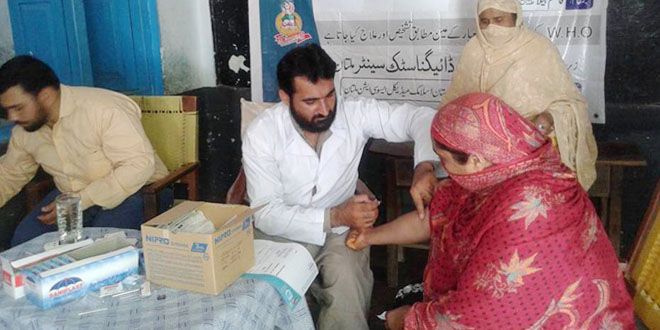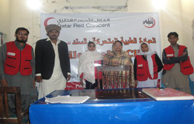Ending TB-related stigma and discrimination

THE WORLD HEALTH ORGANIZATION reported that 1.9 million people died with tuberculosis (TB) in 2015.1 Each of these deaths is a tragedy in itself, as TB is a preventable and curable disease. There is, however, another tragedy which goes grossly unreported as it is not systematically measured: too many of those who die from or survive TB are ejected from their households, spurned by their loved ones, and/or lose their jobs, just to mention the most common social consequences of being diagnosed with TB. Furthermore, an estimated 4 million people annually miss accessing TB care; TB stigma is likely to be one of the reasons behind this. Further understanding the nature of TB stigma and measuring its magnitude are essential steps towards mounting a proper response to the problem. Reducing TB stigma is essential because it hinders care seeking,2–4 contact tracing, outbreak investigations,5–8 treatment initiation,9 adherence10 and quality of care. Moreover it degrades social capital,11–13 may contribute to catastrophic costs,14 and deprives people with TB of their rights and the respect of others.15,16 This supplement presents the state of the art in TB stigma. Rood et al. show that TB stigma thrives in settings where criminalisation laws and policies contribute to high rates of incarceration.2 Zwerling et al. propose a new approach to take stigmatisation into the cost-effectiveness equation. Sommerland et al., confirm that effective interventions to reduce TB stigma are few, and innovations are needed,17 while Straetemans et al. hint that training health care workers may make them better allies.18 Finally, Macintyre et al. outline the TB stigma research gaps and how to fill them.19 The global TB community must acknowledge TB stigma and act on it effectively as a matter of urgency, in alignment with the WHO’s End TB Strategy, which has zero TB suffering in its vision,20 and the Sustainable Development Goals (SDG) agenda of ending TB.21 The Stop TB Partnership’s Global Plan to End TB calls for a paradigm shift, prioritising vulnerable and underserved populations.22 Global TB stakeholders must go beyond medical interventions to fully address the suffering of TB-affected communities, taking bold, concerted actions towards a peopleand patient-centred approach.23 This special supplement contributes to filling the current knowledge gap on TB stigma and informs further, urgently needed research and policy measures.
JARAMILLO* S. SAHU† C. VAN WEEZENBEEK‡
INT J TUBERC LUNG DIS 21(11):S2–S3 Q 2017 The Union http://dx.doi.org/10.5588/ijtld.17.0229
References
1 World Health Organization. Global tuberculosis report, 2016. WHO/HTM/TB/2016.13. Geneva, Switzerland: WHO, 2016.
2 Rood E J J, Mergenthaler C, BakkerMI, Redwood L, Mitchell E MH. Using 15 DHS surveys to study epidemiological correlates of TB courtesy stigma and health-seeking behaviour. Int J Tuberc Lung Dis 2017; 21 (Suppl 1): S60–S68.
3 Godfrey-Faussett P, Kaunda H, Kamanga J, et al. Why do patients with a cough delay seeking care at Lusaka urban health centres? A health systems research approach. Int J Tuberc Lung Dis 2002; 6: 796–805.
4 Sommerland N, Wouters E, Masquillier C, et al. Stigma as a barrier to the use of occupational health units for tuberculosis services in South Africa. Int J Tuberc Lung Dis 2017; 21 (Suppl 1): S75–S80.
5 Jimenez AD. Playing the blame game: casting guilt and avoiding stigma during a tuberculosis health crisis. Int J Sociol Soc Policy 2003; 23: 80–114.
6 Klovdahl A S, Graviss E A, Yaganehdoost A, et al. Networks and tuberculosis: an undetected community outbreak involving public places. Soc Sci Med 2001; 52: 681–694.
7 Yaganehdoost A, Graviss E A, Ross M W, et al. Complex transmission dynamics of clonally related virulent Mycobacterium tuberculosis associated with barhopping by predominantly human immunodeficiency virus–positive gay men. J Infect Dis 1999; 180: 1245–1251.
8 Faccini M, Cantoni S, Ciconali G, et al. Tuberculosis-related stigma leading to an incomplete contact investigation in a low incidence country. Epidemiol Infect. 2015; 143: 2841–2848.
9 Skinner D, Claassens M M. It’s complicated: why do tuberculosis patients not initiate treatment? A qualitative study from South Africa. BMC Infect Dis 2016; 1–9.
10 Munro S A, Lewin S A, Smith H J, Engel M E, Fretheim A, Volmink J. Patient adherence to tuberculosis treatment: a systematic review of qualitative research. PLoS Med 2007; 4(7): e238.
11 Kaawa-Mafigiri D. Social networks and social support for tuberculosis control in Kampala, Uganda. Dissertation. Cleveland, OH, USA: Case Western Reserve University, 2007.
12 Bender A, Peter E, Wynn F, Andrews G, Pringle D. Welcome intrusions: an interpretive phenomenological study of TB nurses’ relational work. Int J Nurs Stud 2011; 48: 1409–1419.
13 Onazi O, Gidado M, Onazi M, et al. Estimating the cost of TB and its social impact on TB patients and their households. Public Health Action 2015; 5: 127–131.
14 Colvin C. Is attitude toward TB disease disclosure a valid proxy measure of anticipated TB stigma in the general population? Evidence from Honduras. Int J Tuberc Lung Dis 2016: 20 (11 Suppl 1): S26.
15 Chikovore J, Hart G, KumwendaM, Chipungu G A, Desmond N, Corbett E L. TB and HIV stigma compounded by threatened masculinity: implications for tuberculosis healthcare seeking inMalawi. Int J Tuberc Lung Dis 2017; 21 (Suppl 1): S26–S33.
16 Miller C, Huston J, Samu L, Mfinanga S, Hopewell P, Fair E. ‘It makes the patient’s spirit weaker’: tuberculosis stigma and gender interaction in Dar es Salaam, Tanzania. Int J Tuberc Lung Dis 2017; 21 (Suppl 1): S42–S47.
17 Sommerland N, Wouters E, Mitchell E M H, et al. Evidence based interventions to reduce tuberculosis stigma: a systematic review. Int J Tuberc Lung Dis 2017; 21 (Suppl 1): S81–S86.
18 Straetemans M, Bakker M I, Mitchell E M H. Correlates of observing and willingness to report stigma towards HIV clients by (TB) health workers in Africa. Int J Tuberc Lung Dis 2017; 21 (Suppl 1): S6–S18.
19 Macintyre K, BakkerMI, Bergon S, et al. Defining the research agenda to measure and reduce tuberculosis stigmas. Int J Tuberc Lung Dis 2017; 21 (Suppl 1): S87–S96.
20 World Health Organization. The End TB Strategy. Geneva, Switzerland: WHO, 2015.
21 United Nations General Assembly. Resolution adopted by the General Assembly on 25 September 2015. New York, NY, USA: UN, 2015. http://www.un.org/ga/search/view_doc.asp? symbol¼A/RES/70/1&Lang¼E Accessed August 2017.
22 World Health Organization. Global Plan to End TB: The Paradigm Shift 2016–2020. Geneva, Switzerland: WHO, 2015. http://www.stoptb.org/assets/documents/global/plan/ GlobalPlanToEndTB_TheParadigmShift_2016-2020_StopTBPartnership.pdf Accessed August 2017.
23 World Health Organization. Global Strategy on People-centred and Integrated Health Services. Geneva, Switzerland: WHO, 2015. http://www.who.int/servicedeliverysafety/areas/peoplecentred-care/global-strategy/en/ Accessed August 2017.





